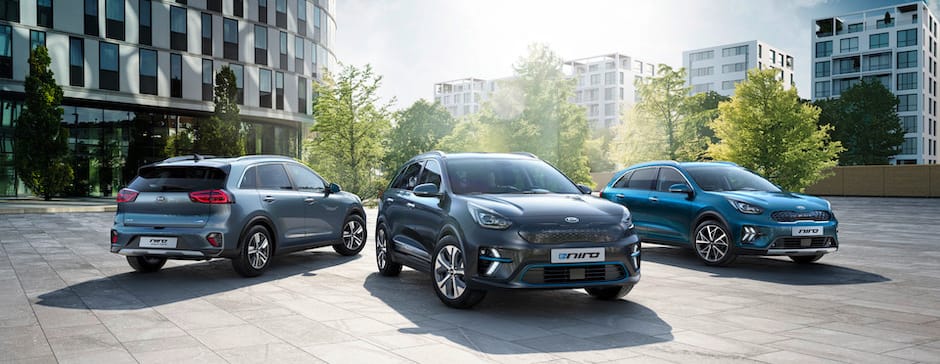News

What do Clean Air Zones mean for your business?
London’s Ultra Low Emission Zone (ULEZ) came into force in April, with many towns and cities set to follow similar approaches with their own Clean Air Zones (CAZ) in the very near future. The ULEZ currently operates in the same area as the Congestion Charging Zone (though it will expand further in October 2021) and vehicles that don’t meet the necessary emissions standards must pay £12.50 per day to enter (£100 per day for buses and lorries). So could your local area enforce something similar? And if so, how might it affect your business?

How can Kia help?
Our award-winning Eco Range can help you avoid CAZ charges while also potentially helping you and your drivers to make big savings on fuel, VED and BiK tax – you’ll be doing your bit to help the environment, too! Whether it’s a hybrid, plug-in hybrid or the fully electric Kia e-Niro, we’ve got a car to suit your business needs. Check out our Eco Range to see how our advanced powertrains could save you money and reduce your carbon footprint.
Kia Eco RangeWhy are Clean Air Zones happening?
Firstly, let’s look at why Clean Air Zones are being implemented. The main reason, is that poor air quality is believed to be the largest environmental risk to public health in the UK. Estimates suggest that poor air quality is responsible for approximately 40,000 deaths per year. The main offenders are nitrogen oxides (NOX) and fine airborne particulates.
Because of this, the government introduced the ambient air quality directive in 2008, which set legal limits and deadlines for air quality.
However, in 2016, 37 out of 43 zones still breached acceptable limits. The government was taken to court by ClientEarth and lost. As a result, the government needs to focus on its plans for improving air quality. Part of that focus is the introduction of Clean Air Zones.
How could this affect your business?
This is where it gets a little complicated because each council has been allowed to tackle air pollution in its own way. This means that the amount that is charged, and the types of vehicle that must pay, varies by each zone – in fact, some councils have managed to avoid a CAZ altogether by focusing on other ways to reduce pollution – such as improving cycling routes or changing speed limits.
The best thing to do is to check whether there are plans for a CAZ in your area, and whether your vehicles would be subject to a charge. Even if your vehicles are exempt, it could be that new traffic flow measures may affect journey times for you and your drivers. If your vehicles are subject to a charge, it may be worth looking at the cost of paying the charge vs. the cost of upgrading your car or fleet. Some local authorities have even suggested retrofitting approved systems to offending cars that will make them exempt.
Where are the confirmed zones?
Many councils are still finalising plans, or investigating ways to avoid a CAZ altogether, however, some areas have already had their plans approved and will come into effect as soon as January 2020. Please find a list below.
However, there are many more areas that are investigating the implementation of a Clean Air Zone. You can check your local authority website to see if there are any plans in the works.
What’s the long-term plan?
Clean Air Zones form one part of a larger government plan to reduce air pollution. The UK Government plans to ban the sale of new cars that can travel less than 50 miles on electricity alone from 2040 onwards. This means – theoretically – that non-hybrid petrol and diesel cars will no longer be sold.

